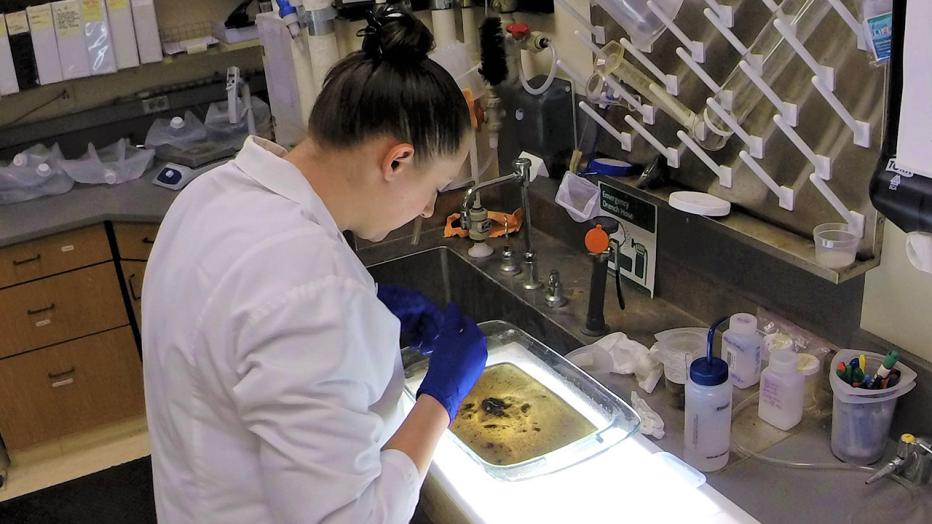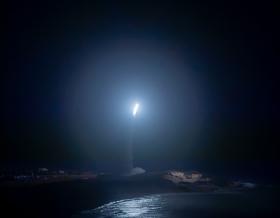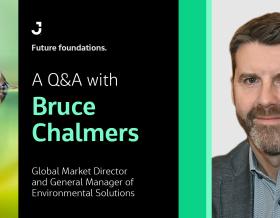
Per- and polyfluoroalkyl substances (PFAS) have been detected around the globe in drinking water, in various media at release sites, in human blood serum and in nonhuman biota tissue. These compounds are emerging contaminants due to the rapidly evolving regulatory landscape, which is driven by incremental advances in toxicological and risk assessment knowledge emanating from academia and government research organizations.
PFAS are made up of long chains of carbon atoms with fluorine atoms attached. The strength of the bond between the carbon and fluorine atoms makes PFAS difficult to break down. These compounds are also uniquely hydrophobic and lipophobic, meaning they repel both water and oil. It’s these properties of being difficult to break down and being repellent that made them a common component of hundreds of commercial products including Teflon and Scotchgard, as an oil-resistant layer on food wrappers and popcorn bags, and in aqueous film forming foams (AFFF) used for firefighting. Because of the difficulty of breaking the carbon-fluorine bond, PFAS are persistent and widely dispersed in the environment.
From a source perspective, PFAS are found at industrial sites such as petrochemical and chemical plants; textile and carpet manufacturers; leather, clothing and fabric treatment facilities; and metal coating and plating facilities. Fire sites impacted by AFFF include airports, refineries and bulk fuel storage areas, current and former Department of Defense facilities, rail yards, training areas and crash sites (planes/cars). Downstream sites include landfills, water treatment systems and sewage sludge/biosolids land applications.
The risk assessment challenge for scientists, regulators and the environmental consulting community is that it’s not just confined to PFOA and PFOS, the most extensively produced and studied of PFAS chemicals. Sixteen other PFAS have been identified in drinking water by the U.S. Environmental Protection Agency using solid phase extraction and liquid chromatography/tandem mass spectrometry (Method 537); an additional 10-15 PFAS via other methods; and thousands of other PFAS are present but not detectable by commonly available methods in sources such as AFFF.
Almost nothing is known about the toxicology of most PFAS.
This complexity hinders the ability to accurately quantify cancer/health risk. There are also the additive and synergistic effects of exposure to multiple PFAS. Biomonitoring studies demonstrate that humans have chronic exposure to multiple PFAS throughout their lifetimes. With regards to ecological risk assessment, there is a base of aquatic toxicity data available for environmental risk assessment for a few PFAS, but wildlife data are still incomplete.
Working ahead of regulatory requirements, our Emerging Contaminants team at Jacobs has partnered with clients, academic partners and remediation vendors for more than five years to develop and test methods for assessing, treating and remediating PFAS in the environment.
Society of Environmental Toxicology and Chemistry (SETAC), North America 40th Annual Meeting, November 3-7 in Toronto, Ontario
Jacobs’ Ecological Risk Leader Chris McCarthy is co-chairing a technical program on Understanding Risks from Exposure to Per- and Polyfluoroalkyl Substances (PFAS) at the Society of Environmental Toxicology and Chemistry (SETAC) North America 40th Annual Meeting in Toronto. The session will examine how multiple lines of evidence are being used to better understand human and wildlife exposure and effects and the translation of this information toward developing regulatory levels for PFAS.
In addition to co-chairing the PFAS risk assessment technical program, Chris McCarthy will also be presenting his findings of chronic PFAS exposure experiments with freshwater midges. Other Jacobs platform and poster sessions at SETAC include the Toronto Waterfront redevelopment project, risk communication, developing ecological risk-based clean-up goals for radionuclides and a deeper look at the use of left censored data when developing exposure concentrations.
Jacobs PFAS Risk Assessment Studies
We’re currently working on a manuscript with the ecotoxicology panelists from the SETAC Focused Topic Meeting (FTM) on PFAS to clearly identify knowledge gaps and prioritize needed action. We also published a peer reviewed manuscript on the availability of data for performing ecological risk assessments at PFAS sites. Jacobs’ risk assessors are part of the Interstate Technical Regulatory Council’s (ITRC) PFAS Team and are the lead authors for the human health and ecological risk assessment sections of the forthcoming ITRC PFAS guidance document. Chris McCarthy is also part of the ITRC training team, providing instruction on the toxicity, regulation, risk assessment and remediation of PFAS at venues across the U.S.
Jacobs is in the fourth year of a U.S. Department of Defense Strategic Environmental Research and Development Program (SERDP) grant to develop an improved understanding of understudied PFAS and organisms. While firefighting foams only represent three percent of the manufactured PFAS, PFAS foams were often applied, tested or used in remote areas. We’re working to close the gap in understanding PFAS ecotoxicity because ecological risk may drive remedial actions at remote sites.
Renewal Solutions
The global demand for smart, sustainable solutions across environmental challenges is one of the biggest issues of our time. Our leadership is predicated on deep knowledge of our clients’ industries and processes, an ability to integrate both proven and leading-edge technologies and most importantly, a commitment to enhancing efficiencies for environmental protection and safety that are truly the best for the world around us. Learn more about Renewal Solutions here: http://www.jacobs.com/solutions/renewal.























































